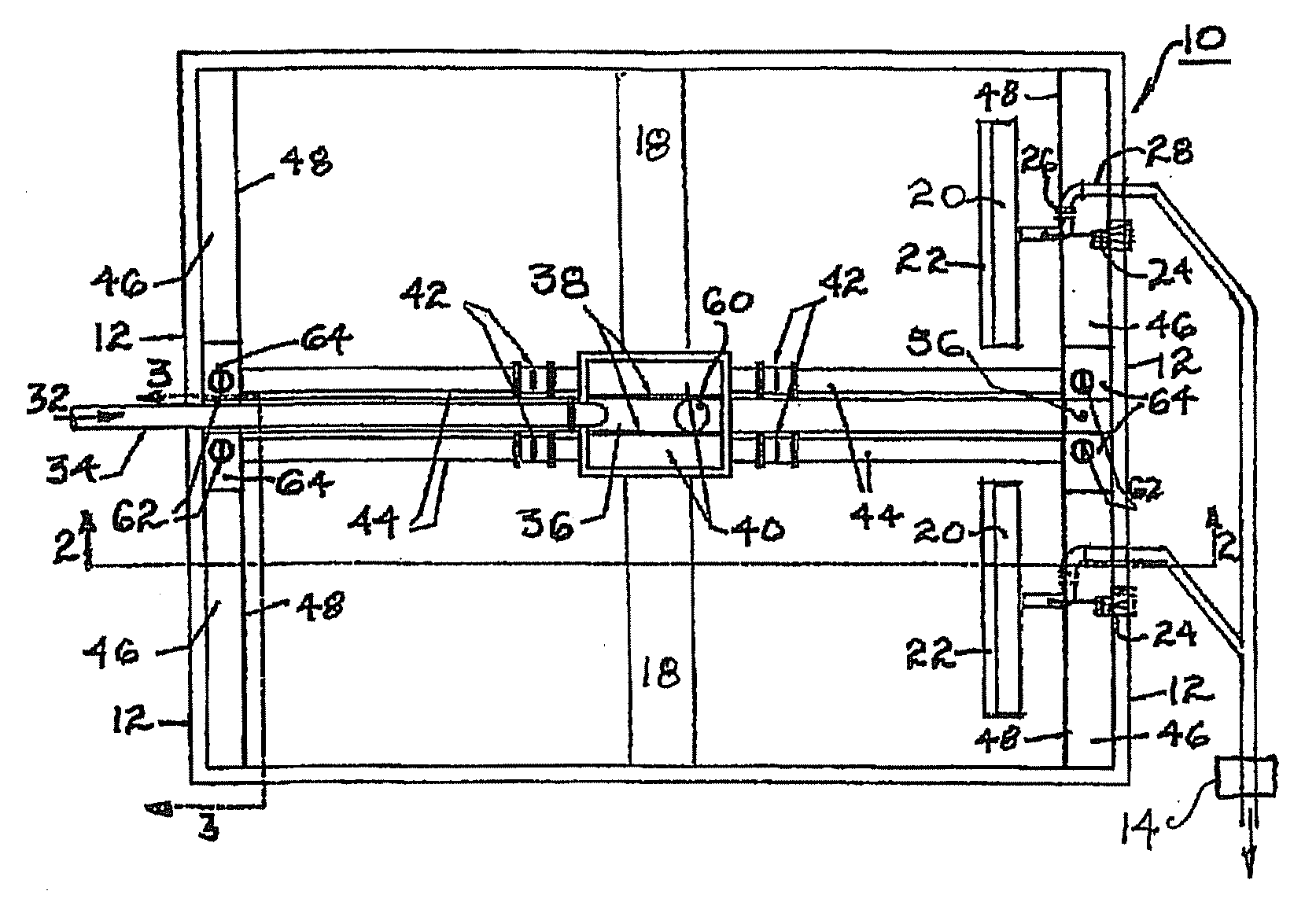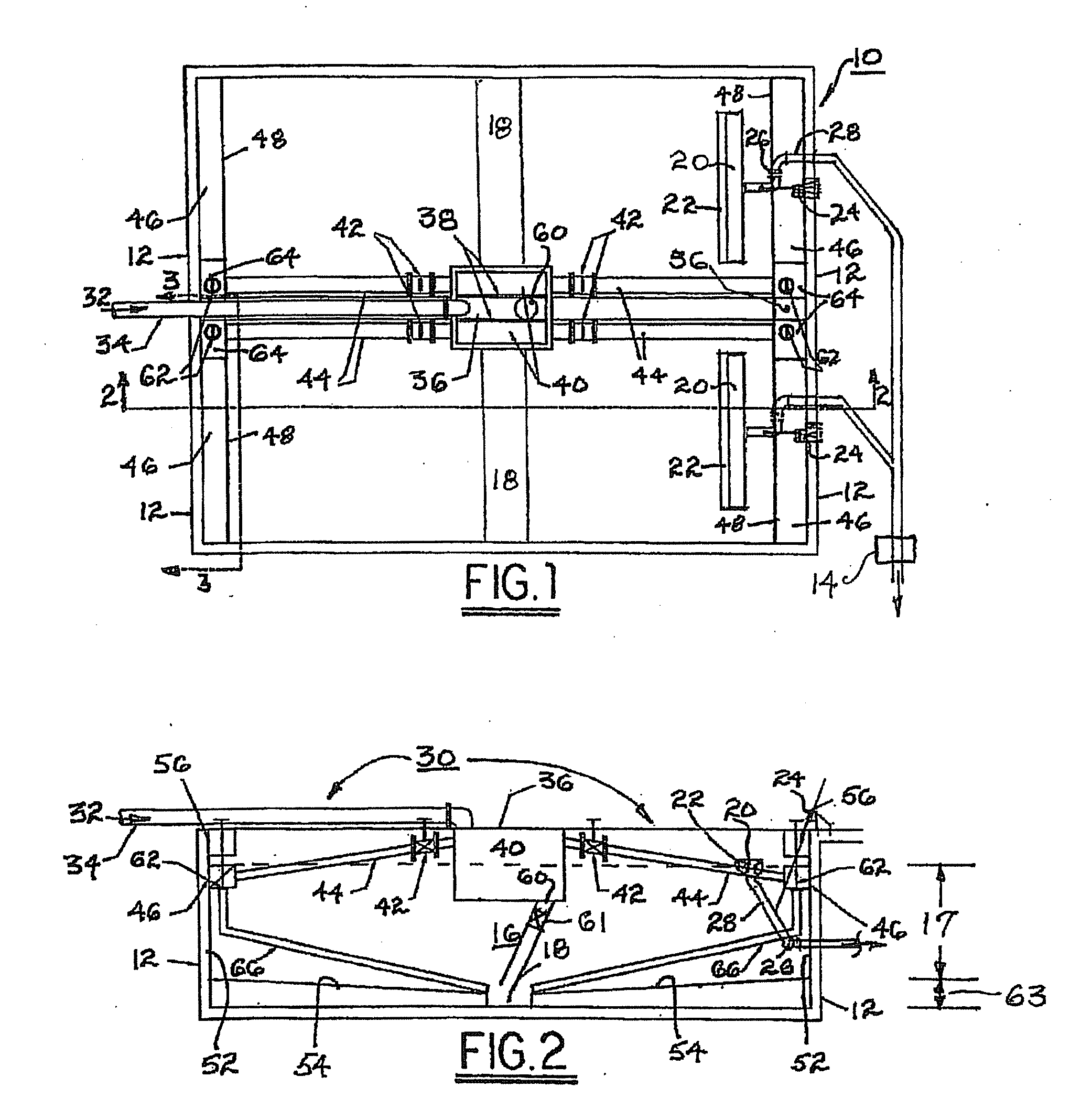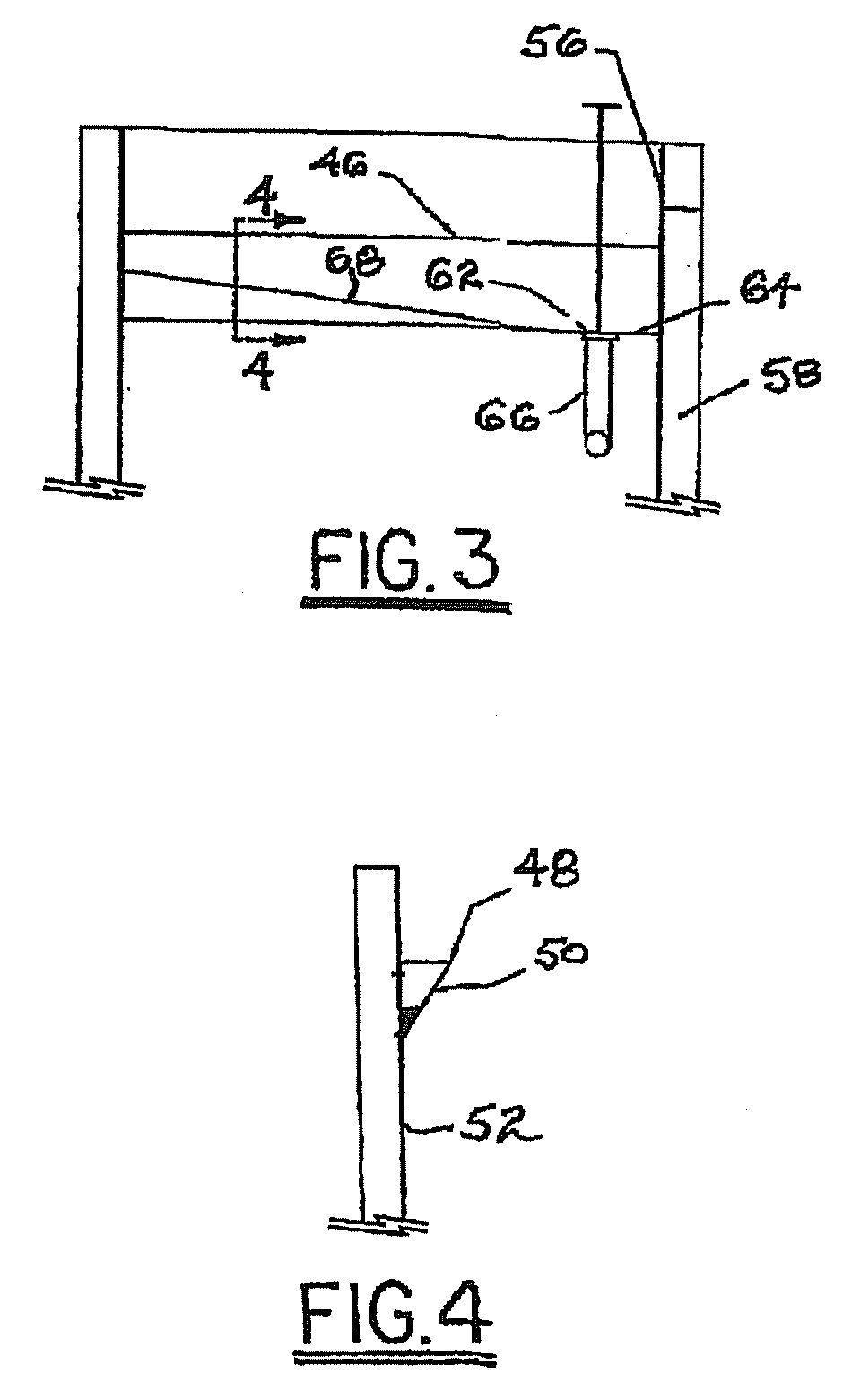Self-cleaning influent feed system for a wastewater treatment plant
a wastewater treatment plant and influent technology, applied in the field of systems, can solve problems such as stream velocities reduction, and achieve the effects of increasing the percent solids in the sludge, minimal cross section of the liquid in the tank, and increasing the influent velocities
- Summary
- Abstract
- Description
- Claims
- Application Information
AI Technical Summary
Benefits of technology
Problems solved by technology
Method used
Image
Examples
Embodiment Construction
[0029]Referring to FIGS. 1 through 4, a system 10 for the primary treatment of wastewater streams (including grit removal, flow equalization, fine screening, flow measurement, and primary clarification) comprises at least one tank 12 and preferably two identically-equipped mirror-image tanks 12 as shown in FIG. 1. The following discussion deals primarily with only one of the two tanks 12 but should be taken as applying equally to both tanks 12 except as noted.
[0030]The overall treatment of waste water influent is substantially as disclosed in the parent '553 application. A flow measurement device 14 is located on the discharge side of the primary settling tanks 12 to measure the actual effluent flow from the primary settling tank. Further, an air blower (not shown) may be provided to aerate the waste water 16 in the primary settling tank to prevent the waste water from becoming septic.
[0031]The waste water treatment system also includes at least one sludge trough 18, a scum trough (...
PUM
| Property | Measurement | Unit |
|---|---|---|
| Dimension | aaaaa | aaaaa |
| Gravity | aaaaa | aaaaa |
Abstract
Description
Claims
Application Information
 Login to View More
Login to View More - R&D
- Intellectual Property
- Life Sciences
- Materials
- Tech Scout
- Unparalleled Data Quality
- Higher Quality Content
- 60% Fewer Hallucinations
Browse by: Latest US Patents, China's latest patents, Technical Efficacy Thesaurus, Application Domain, Technology Topic, Popular Technical Reports.
© 2025 PatSnap. All rights reserved.Legal|Privacy policy|Modern Slavery Act Transparency Statement|Sitemap|About US| Contact US: help@patsnap.com



